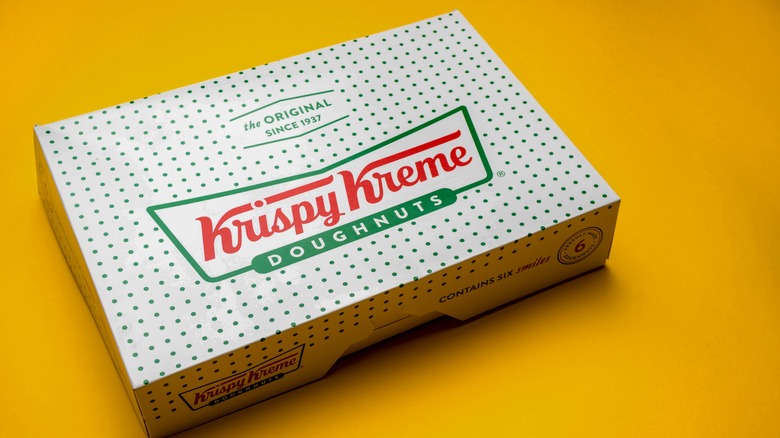Why Krispy Kreme Isn't Doing As Well As You Think
Like many other restaurant chains and businesses around the world, Krispy Kreme saw a significant decline in revenue during the early stages of the coronavirus pandemic in 2020. The donut shop's organic revenue was down 6.7% in the second quarter of 2020, but the company was able to bounce back relatively quickly, seeing a 22.5% increase in revenue in Q2 of 2021 (per a Krispy Kreme press release). The company credited this quick turnaround to the success of its international markets, as well as a new "Hub and Spoke model" for shops in the U.S. and Canada.
The Hub and Spoke model involves larger shops (hubs) producing more donuts, which are then delivered to other smaller facilities (spokes) in a timely manner to ensure freshness (via Restaurant Business Online). A speedy donut delivery is especially important for Krispy Kreme, since a big allure for customers is the "hot now" sign. Fast forward to 2022, and the company is experiencing a few growing pains as it continues to implement this new business model.
High labor and food costs and economic turmoil in the U.K. are causing issues for the brand
Although Krispy Kreme performed well in 2021 and predicted strong growth due to the implementation of its Hub and Spoke business model, unexpected economic circumstances have caused issues for the brand in 2022. According to Restaurant Business Online, the company's shares dropped 15% earlier this week due to projected revenues not living up to expectations.
Krispy Kreme's international stores helped drive revenue growth in 2021, but in 2022, the company is taking a hit from its U.K. stores. According to CNN, operating costs for businesses are up across the board in the U.K. This problem is not unique to the U.K., as the chain is experiencing high labor and food costs in its U.S. locations as well (via Restaurant Business Online).
To combat these financial woes, the brand is doubling down on its plan to buy as many locations from franchisees as possible. The chain is also closing 10 stores that do not have any "spokes" and have underperformed. The donut shop has already seen success with its hub and spoke model in international markets, with $9.8 million in sales per hub over the past year, so it is hoping to replicate that in the U.S. and Canada.

